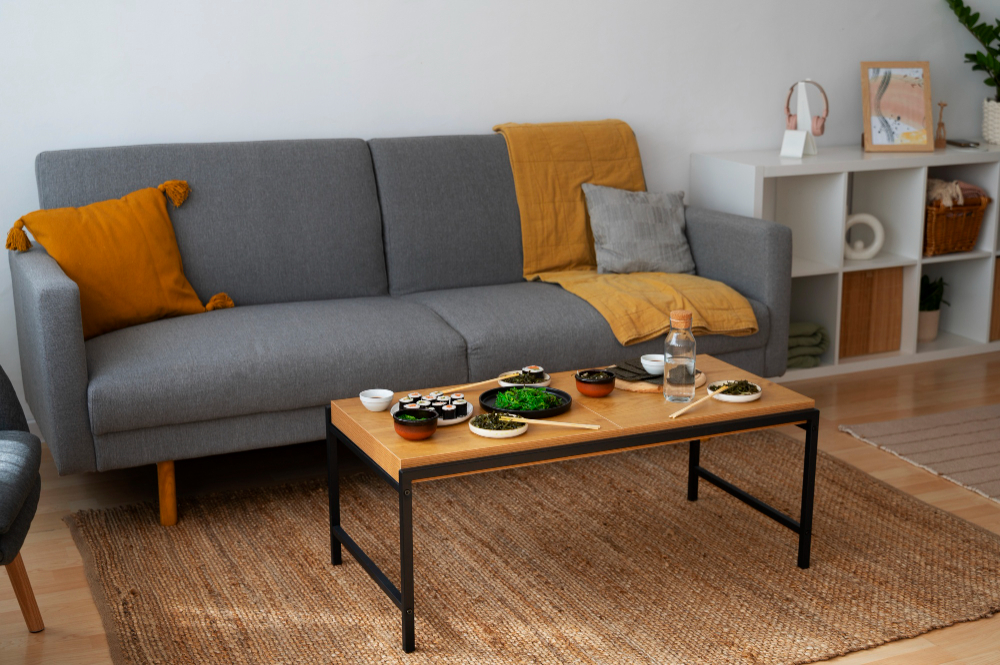
The right rug can transform your living room from a well-furnished space to an inviting oasis of comfort and style. However, the rug's true potential is often lost in the shuffle of placements that don't quite hit the mark. If you're looking to anchor your living room with a rug that stands out for all the right reasons, here are some expert tips for creating the perfect setup.
When it comes to interior design, the nuances of rug placement aren't just about aesthetics; they also impact the flow of the room and can even signal different zones within the same living area. This in-depth guide will take you through the process of selecting, sizing, and positioning your rug with precision.
The Importance of Rug Foundations
A rug is more than just a cozy floor covering—it's a design foundation that influences every aspect of your living room's ambiance. From its size to its color and material, the rug sets the tone for the space.
Understanding Rug Sizes and Shapes
The first thing to consider is the size of the rug. It should be large enough to define the seating area and create a unified visual space. In most living rooms, the rug should extend beyond the coffee table and reach under the front legs of the furniture, at the very least. For a more spacious look, a larger rug that accommodates all seating without looking crowded is ideal.
The shape of the rug is also crucial. Rectangular rugs tend to work best in traditional living rooms, while round or square rugs can add a contemporary touch or are great for defining smaller conversation areas.
Choosing the Right Material and Pile Height
Rug materials have a significant impact on the comfort and feel of your living space. Natural fibers like wool and cotton are soft and durable, while synthetic materials like polypropylene offer easy care and come in more affordable options.
The material's pile height—how deep the fibers are—can also affect your room's vibe. A shag rug lends a warm, cozy feeling, while a flatweave can create a sleek, modern aesthetic.
Sizing It Up
One of the most common decorating mistakes is choosing a rug that's too small for the living room. This error not only undermines the rug's impact but also disrupts the room's proportions.
Measuring for the Perfect Fit
Before heading to the rug store, measure your living room and furniture to determine the ideal rug size. Here's a step-by-step guide:
- Measure the length and width of your seating area.
- Add 24 inches to each side to allow the rug to extend past the furniture legs.
- Visualize the desired shape and note the measurements for that shape.
Visualizing the Impact
An appropriately sized rug will visually anchor the room, while a too-small rug will make the furniture appear to float aimlessly. Take into account the space between the rug and the walls, aiming for a balanced edge-to-furniture ratio across the entire seating area.
Positioning with Purpose
Once you've found the perfect rug, the next step is to position it so that it enhances the living room's functionality and flow.
Centering the Rug
The rug should be centered within the seating area to provide a cohesive look. For rectangular rugs, align the long sides with the room's walls or the seating arrangement. If you have a square or round rug, center it beneath a central lighting fixture or the center of the seating arrangement to ground the furniture.
Separating Spaces
If your living room serves multiple functions, a rug can help delineate distinct areas. A larger rug under the main seating area and a smaller one under a reading nook or home office space will visually separate the spaces while maintaining a sense of openness.
Layering Rugs
Layering rugs is a stylish option that allows you to mix patterns and textures. Start with a larger natural-fiber rug for the base and add a smaller vintage or flatweave rug on top to bring character to the room.
Final Flourishes
The right rug placement can elevate your living room's aesthetics, but a few final design touches will complete the look.
Selecting the Right Colors and Patterns
Choose a rug that complements your existing color scheme and furniture. Solid rugs provide a versatile backdrop and can ground a room's design, while patterned rugs can add a pop of interest.
Remember, a rug with large-scale patterns can make a small room feel more spacious, while a small-scale pattern can be lost in a large room. Balance is key here, so choose patterns that harmonize with the room's scale.
Maintenance and Care
Your rug's placement should take into account ease of maintenance. High-traffic areas may require a darker rug to hide dirt or a lower pile to resist flattening.
Placing furniture on your rug can also help protect it from wear. Use furniture pads under heavy pieces to spread the weight and prevent the rug from bunching up or curling at the edges.
Rug Store in Scottsdale, AZ
For those looking for a rug store in Scottsdale AZ, Organic Looms offers a wide range of handcrafted, custom-sized rugs made from the finest natural materials. With their expertise in weaving and design, they can help you find or create a rug that suits your style and space. Contact them today to start the process and ensure your living room rug is positioned impeccably.
In conclusion, with the proper measurements, carefully chosen materials, and purposeful placement, a living room rug can turn a good room into a great one. By considering these insights, you'll be well on your way to a beautifully balanced living space that feels both comfortable and well designed.